Showcase Your MSV Mastery to Transform Interiors
Words: Sarah Lograsso
Words: Sarah Lograsso, Director of Marketing & Product Management, Westlake Royal Building Products
Photos: Westlake Royal Building Products
When it comes to interior build outs, retrofits and full remodels, manufactured stone veneer can bring a touch of timeless elegance and sophistication to any commercial or residential project. From sample reviews and product selection all the way through the application process, MSV offers a number of advantages that can help move your project along with speed, efficiency and confidence.
In particular, MSV’s lightweight composition and ease of installation makes it an ideal choice for indoor use where weight and space considerations are important. This includes a wide range of applications including accent walls, fireplace surrounds, kitchen backsplashes, lobbies and foyers, bathroom spaces, wine cellars and more.
With such a diverse landscape of potential applications, it’s important to establish shared expectations with your end-use customers and the entire project team. This should include:
- A Shared Vision – Begin with a detailed discussion (or series of discussions) with your client and other project partners to understand their vision for the finished space. In addition to style preferences and budget constraints, consider asking them to describe how the space will be used and how they want people to feel when they’re in it.
- Space Evaluation – Assess where the MSV will be installed, taking note of the planned or existing architectural features of the space, lighting conditions and any existing design elements. This will help you narrow in on the product that best complements the look, feel, flow and function.
- Product Specification – In terms of both format and color palette, there are thousands of MSV solutions that can help bring every space to life. The challenge is to prioritize which options work best for the space at hand, and you’ll want to play a guiding role in helping the client determine which option provides the best mix of color, texture and patterning options.
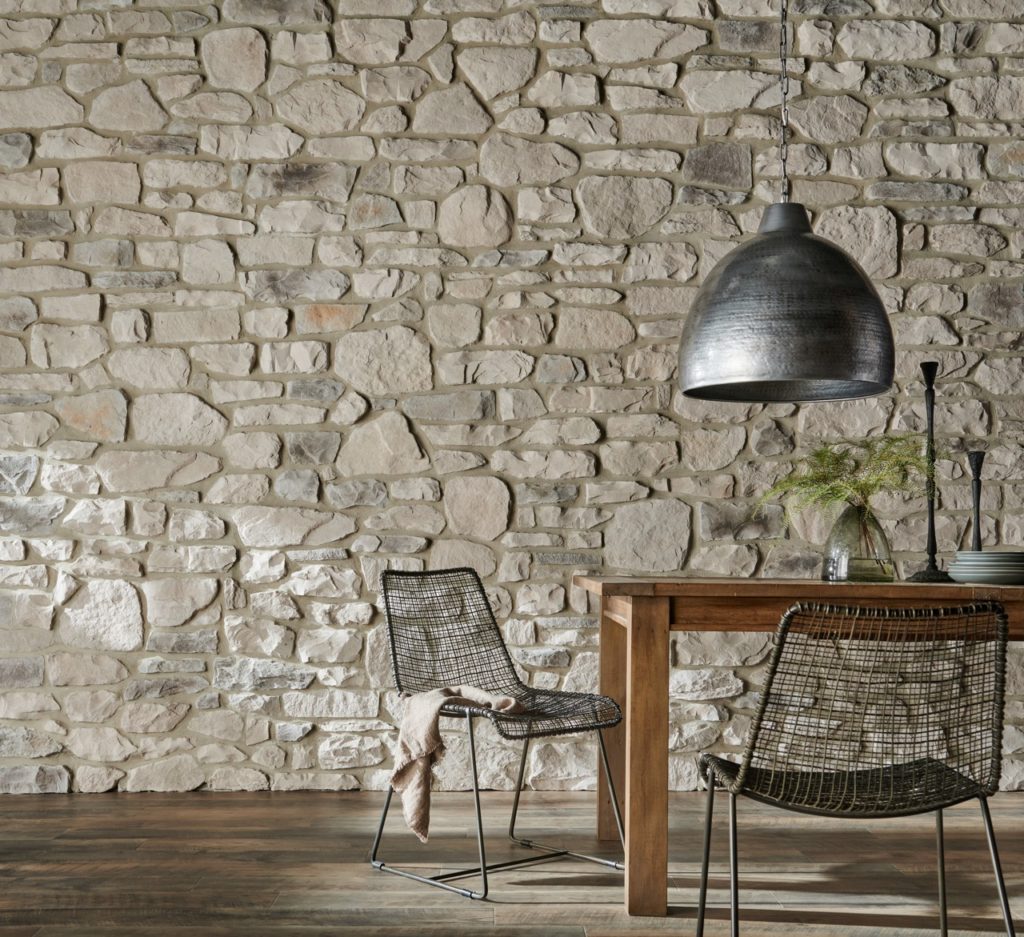 Tuscan Ridge in Winter Point™, from Dutch Quality Stone
Tuscan Ridge in Winter Point™, from Dutch Quality Stone
- Installation Considerations – Confirm with everyone on the installation team to ensure that those working with the MSV application are well versed in the proper installation techniques for this product. This includes identifying whether you’re moving forward with a dry stack solution or a grouted aesthetic, as well as prepping everyone on the necessary finishing touches, such as grout color and joint spacing. If you’re working with newer team members who require some additional training or a refresher on certain aspects of the application process, consider referring them to the Technically Speaking video series and other resources from trusted partners and trade associations.
- Ongoing Care and Maintenance – Unlike most natural stone solutions, MSV will not require much ongoing maintenance such as periodic sealing and cleaning. Take the time to educate your client about proper care so they can maintain the longevity of the product for decades to come.
 Vantage30 in White Elm, from Eldorado Stone
Vantage30 in White Elm, from Eldorado Stone
Perfecting the Design
Perhaps the most important consideration for your clients is how to achieve a desired aesthetic in the finished project. This includes the tangible, textural qualities of the stone in the space, as well as the more elusive emotional component—how does the space make its occupants feel?
Using stone to beautify a residential or commercial space subconsciously infuses that area with an innate connection to nature, which inherently promotes certain emotional reactions from the people who inhabit that space. For many, the use of stone helps to ground them and offer a sense of calm stability. In fact, stone is one of the most impactful materials to consider when you’re looking to up the biophilic design factor of any project, as it contributes to a number of positive psychological and physiological benefits.
This still leaves you with an endless assortment of options to consider, of course. As you work with your clients and the rest of the project team to nail down the exact look and feel of a new or renovated space, here are some of the most common stone veneer formats to bear in mind:
- Ashlar – Ashlar profiles feature rectangular or squared-off pieces that are typically uniform in size and shape. Applications exhibit clean lines and an overall symmetrical appearance with some subtle variations, aiming to create a polished and structured aesthetic to fit a variety of traditional and modern design styles.
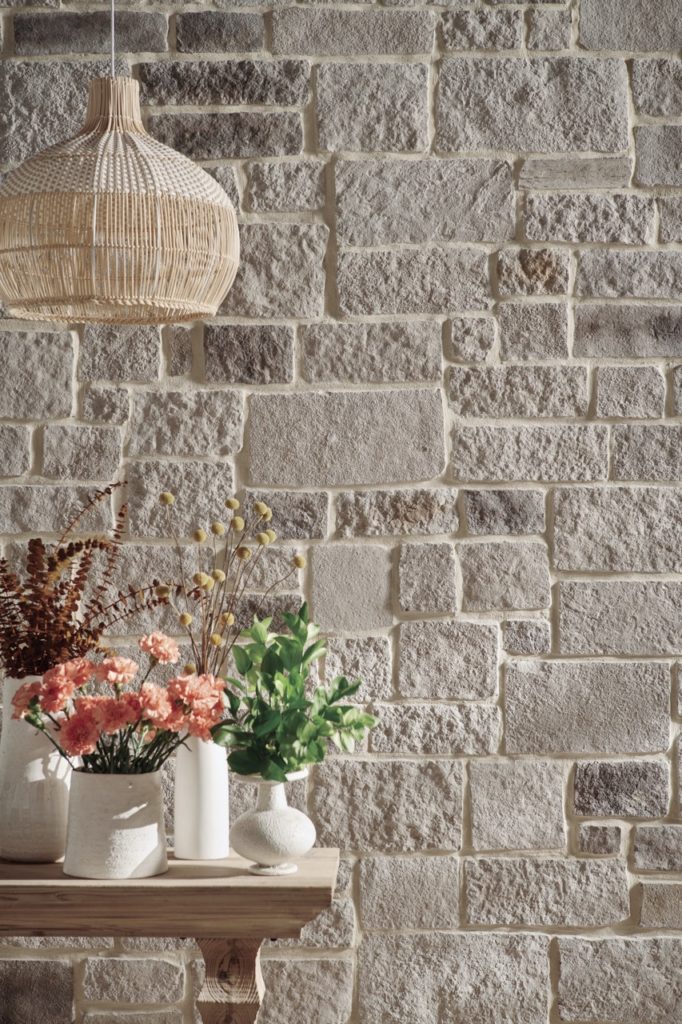 Rough Ashlar in Winter Point™, from Dutch Quality Stone
Rough Ashlar in Winter Point™, from Dutch Quality Stone
Ledge – Ledge profiles consist of irregularly shaped pieces that mimic the look of a natural ledgestone material. Pieces typically vary in size and thickness, which provides a rugged and textured aesthetic that’s perfect for projects looking to embrace a rustic, organic look. Ledgestone is a great way to add depth and dimension to the wall surface in a way that complements other architectural or design elements while also creating a focal point.
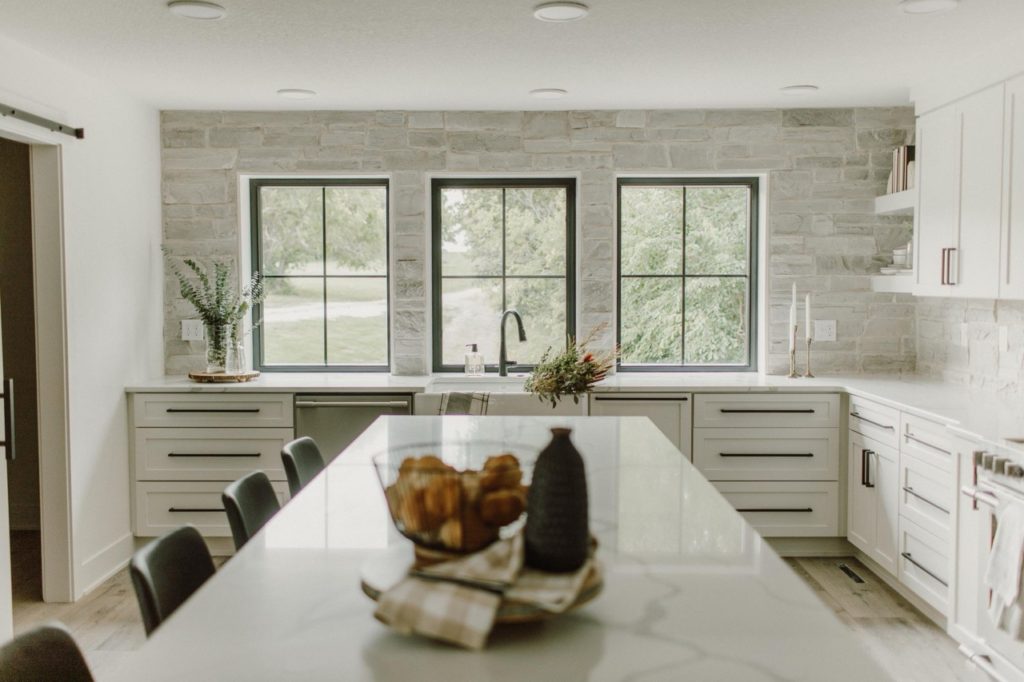 Country Ledgestone in Wheaton™, from Cultured Stone
Country Ledgestone in Wheaton™, from Cultured Stone
Irregular – Irregular profiles are characterized by a series of highly diverse shapes, sizes and textures to resemble natural stone as you would find it in nature. This type of stone veneer is designed to emulate the random patterns and irregularities of natural stone to create a unique, authentic look. It’s a rugged, earthy approach to infusing spaces with character and visual interest.
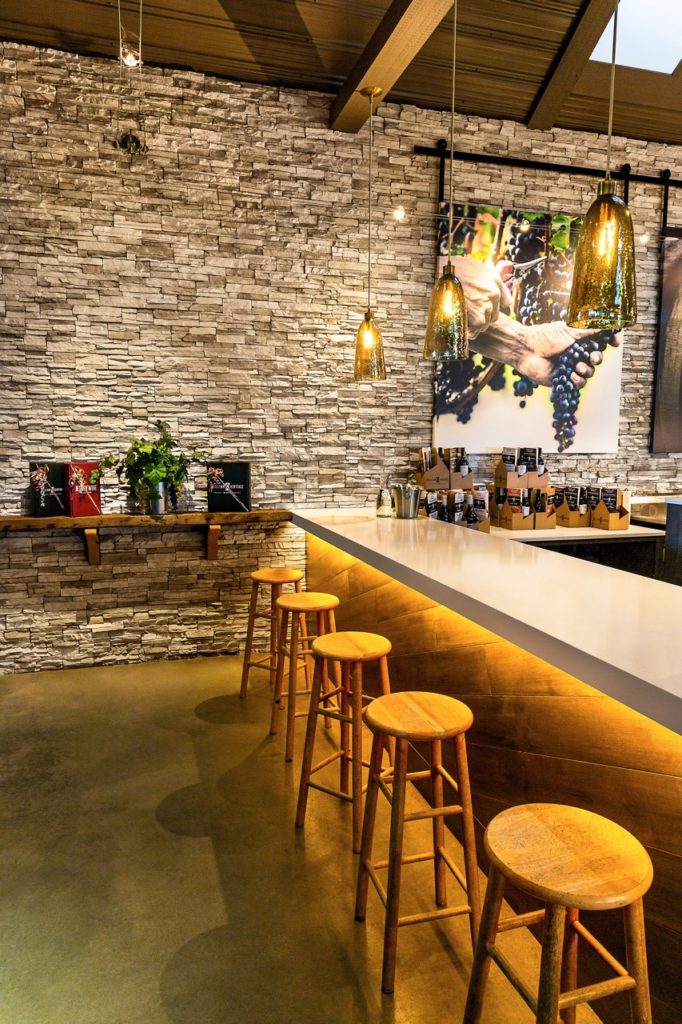 Stacked Stone in Daybreak, from Eldorado Stone
Stacked Stone in Daybreak, from Eldorado Stone
Large Format – Large format profiles feature oversized pieces that make a bold statement and create a striking visual impact. These pieces are larger in size compared to traditional stone veneer, offering fewer grout lines and quicker installation. This approach is ideal when you’re looking to cover expansive feature walls or fireplace surrounds while creating a sense of drama and sophistication in the space.
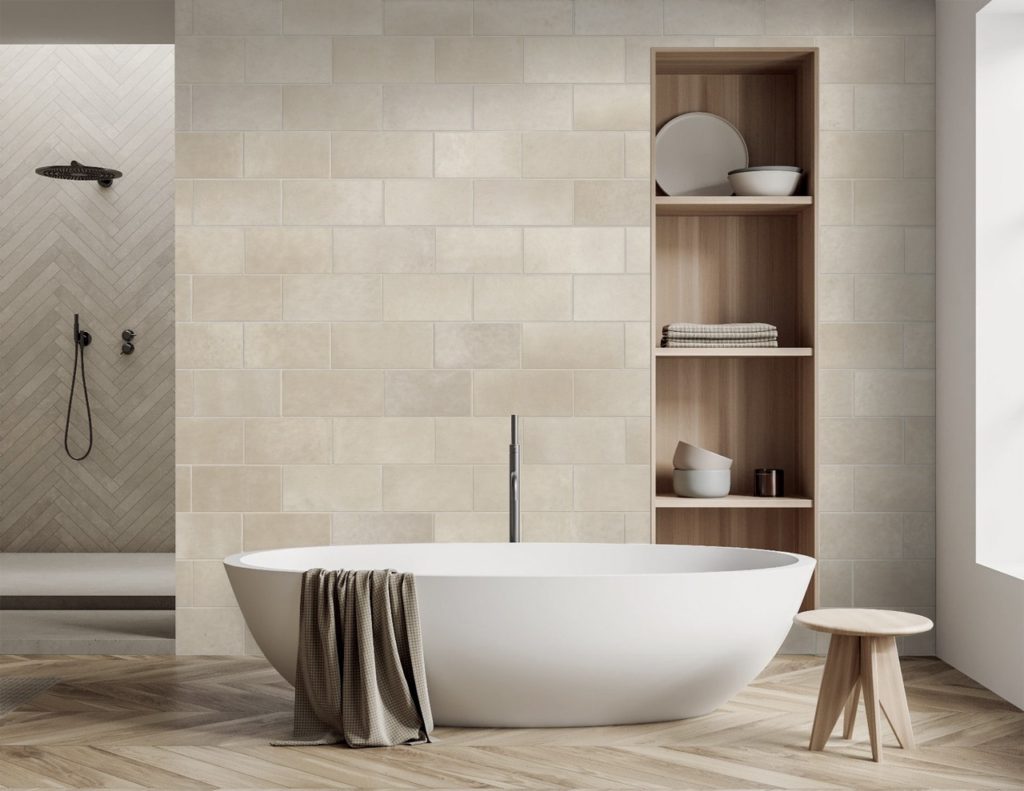 Cast-Fit® in Parchment™, from Cultured Stone
Cast-Fit® in Parchment™, from Cultured Stone
Brick – Brick veneer profiles replicate the appearance of traditional clay bricks in a thinner and lighter format, typically in rectangular shapes with straight edges. Brick veneer offers a timeless and versatile look and can be used to add textural interest to any contemporary or traditional space.
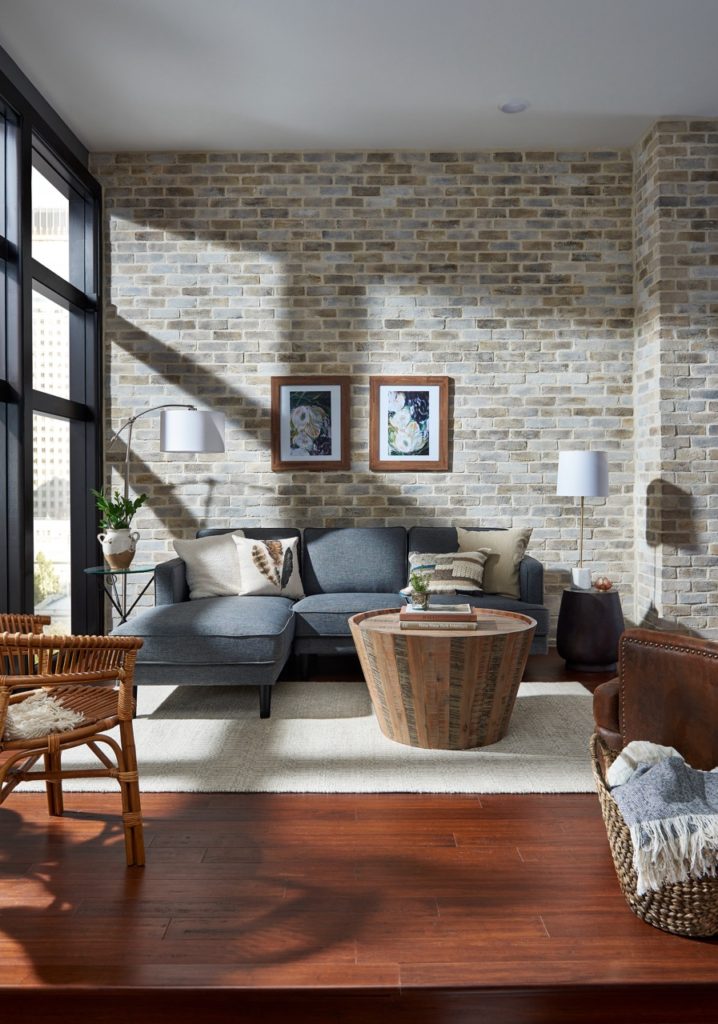 TundraBrick® in Latigo, from Eldorado Stone
TundraBrick® in Latigo, from Eldorado Stone
Captivate with Color
One area where the right MSV application can truly excel is color. As a manufactured product, MSV offers a wide range of color and texture pairings that often surpass the look of quarried natural stone. One key advantage is the ability to achieve color consistency with manufactured stone. Where a natural stone product may vary significantly in color and veining from one piece to another, MSV provides more precise control over the way the color palette plays on the wall.
MSV also offers the potential for color consistency and overall design harmony over time, for example when planning and executing a master planned community or a multi-property renovation from a client looking to achieve a more uniform aesthetic across locations.
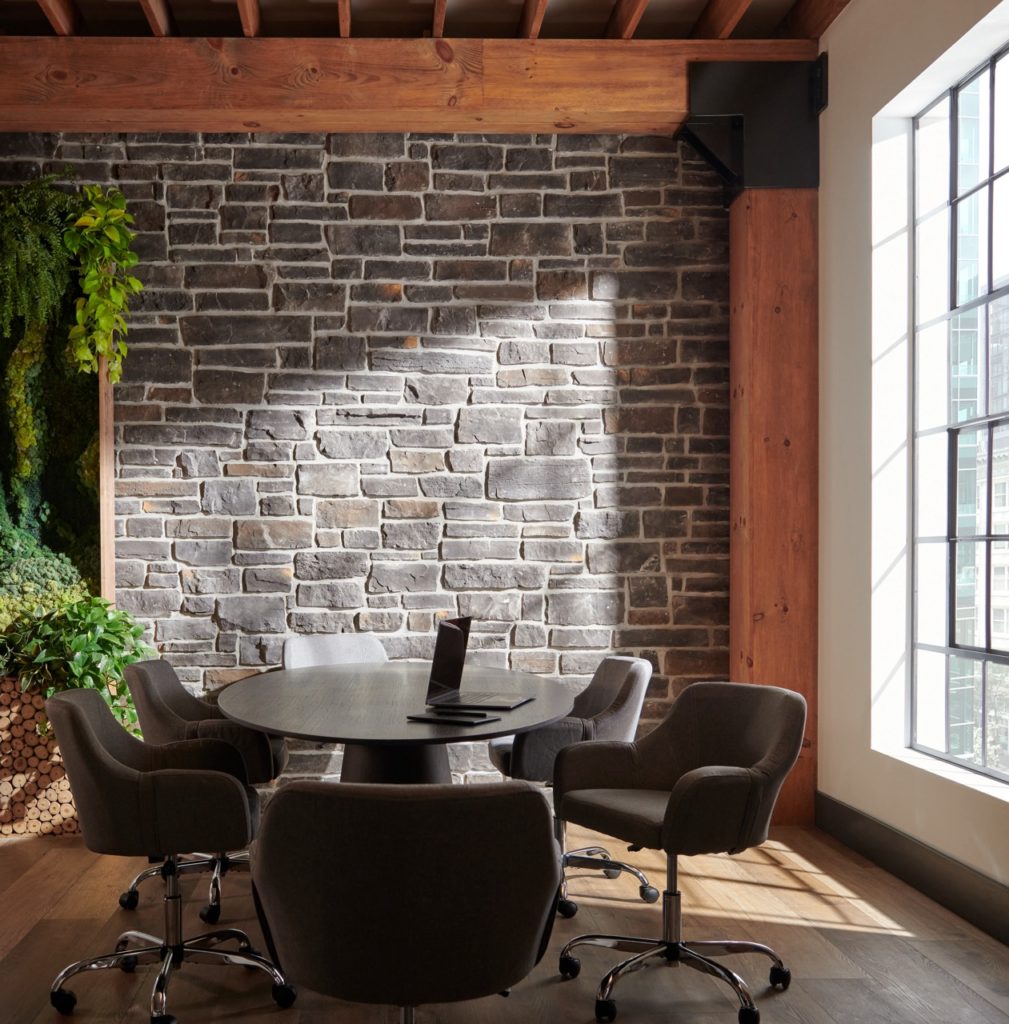 Weather Ledge in Ashen, from Dutch Quality Stone
Weather Ledge in Ashen, from Dutch Quality Stone
Other benefits of working with manufactured stone veneer include:
- Enhanced Color Variation – The manufacturing process for MSV is typically very hands-on, utilizing teams of artisans with many years of experience in manipulating pigments and finishes to create dimension and depth in any given colorway. This controlled, nuanced color variation adds character to the wall and delivers a robust aesthetic experience. Even within a single color family—neutral whites, earthy browns, moody black, weathered grays, etc.—MSV offers a uniquely expressive approach to developing color palettes with captivating highlights, relief patterns and tones.
- Custom Color Options – MSV manufacturers often bring a wide variety of customized color options to suit any architectural and design style. For certain projects, the right supplier can also collaborate with you to create new custom colors that will match an existing color scheme or introduce something completely new to the market. This high level of customization potential allows for more creativity and personalization when necessary, and it tends to deepen the working relationship between the project team and the manufacturer in the process.
- Fade Resistance – MSV is often formulated with UV-resistant pigments and finishes to ensure long-lasting color retention. Unlike natural stone, which may fade or weather over time when exposed to sunlight and other environmental elements, manufactured stone typically maintains its color and appearance for decades with little to no change. This makes MSV an ideal material for exteriors, as well as light-filled or semi-exposed interior spaces and indoor/outdoor transitions.
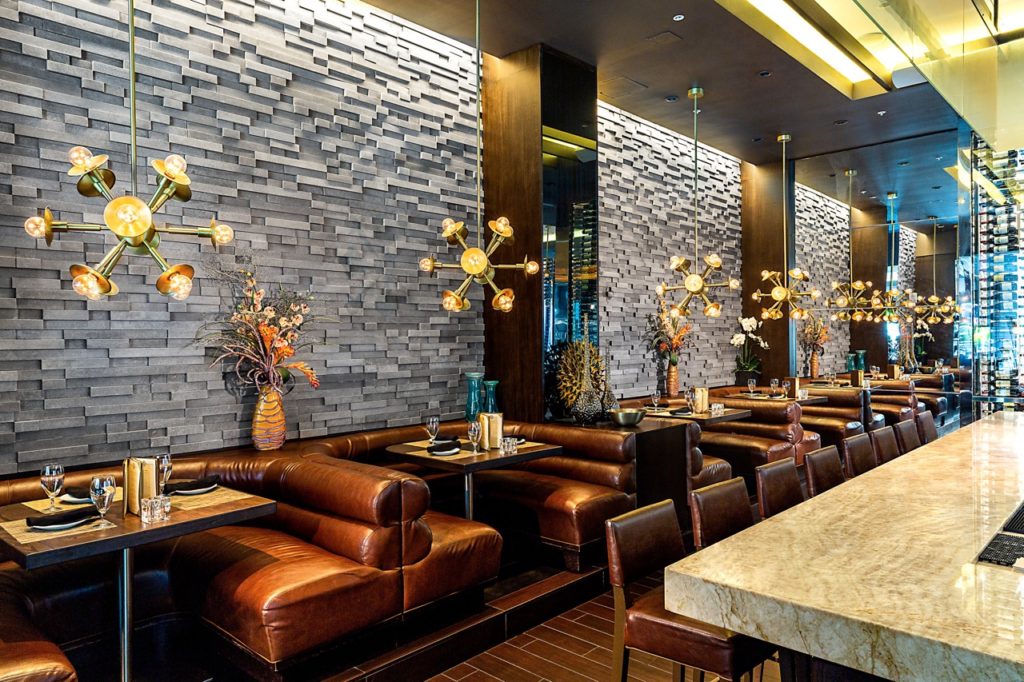 Pro-Fit® Modera™ Ledgestone in Carbon, from Cultured Stone
Pro-Fit® Modera™ Ledgestone in Carbon, from Cultured Stone
Collaboration Leads to Future Success
The list of textural and color options continues to expand across the MSV segment, driven in large part by collaboration across market segments. Manufacturers are continuously working to introduce new finishes and textures in a variety of colorways that can speak to the timeless appeal of stone while also charting a new path toward the trends of tomorrow. Importantly, they rely on input from the A&D community, masons, builders, remodelers, contractors, distribution partners and end users to help develop new expressions of ageless design.
To learn more and connect with someone who can collaborate on national and regional options in your area, visit ElevateWithStone.com.